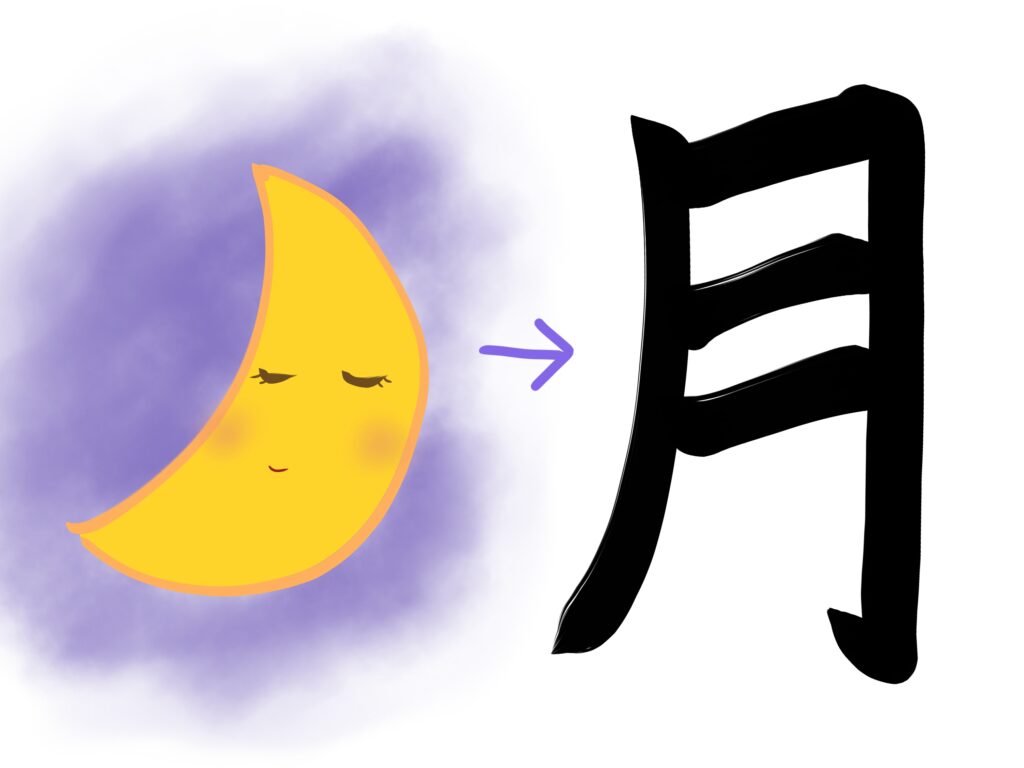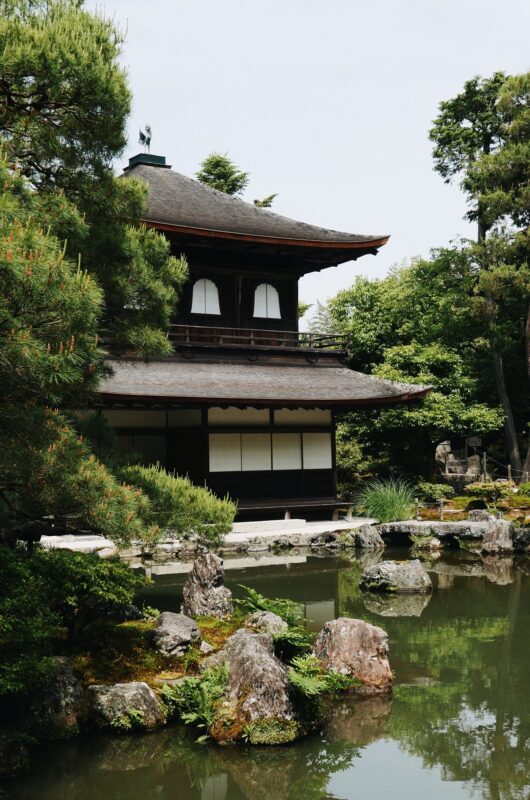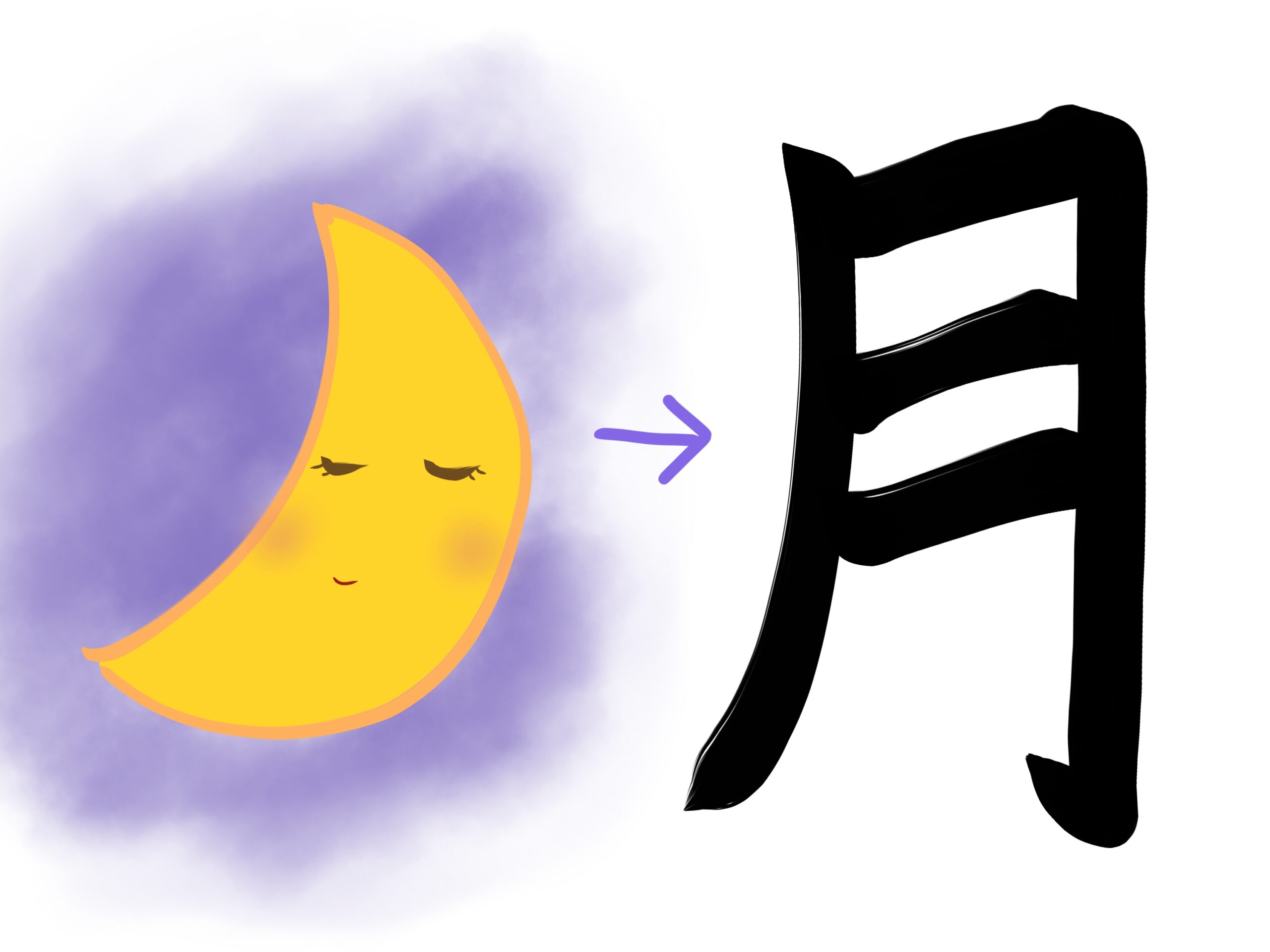
Meaning and Pronunciations of “月”
- ゲツ getsu – 月曜 getsuyou: Monday
- ガツ gatsu – 正月 shoogatsu: a new year、一月 ichigatsu: January
- つき tsuki – 毎月 maitsuki: every months、月見 tsukimi: moon viewing、三日月 mikazuki: crescent moon
Japanese people and the moon
The Kanji character “月” is derived from the pictograph for the crescent moon. Many words are using the moon (月) to refer to the calendar, such as “月曜 getsuyou: Monday”, “正月 shoogatsu: a new year” and “毎月 maitsuki: every month”. This is due to the close relationship between the moon and the old calendar in Japan.
We used to use the lunar calendar which is based on the phases of the moon.
The moon waxes from a new moon to a full moon and then wanes from a full moon to a new moon, which is called a month. In the old days, the moon’s waxing and waning were seen by many people at the same time, which may have inspired people to use the moon as a calendar.
In Japan, there is a traditional culture of appreciating the moon. In the precincts of Ginkakuji (Silver Pavilion in Kyoto), there is a mound of sand called Kougetsu-dai and Ginsadan. There are two theories: one is that these heaps of sand were built to watch the moon rise over Mt. Tsukiwai, and the other is that they reflect the moonlight and illuminate the main hall. Perhaps this is the reason that Ginkakuji is the image of the moon while Kinkakuji (Golden Pavilion) symbols the sun.




Comments